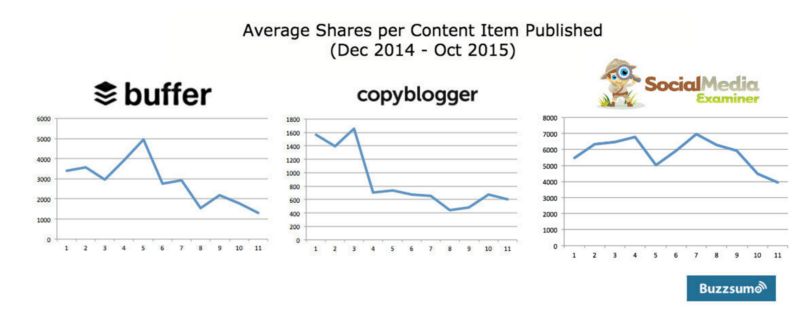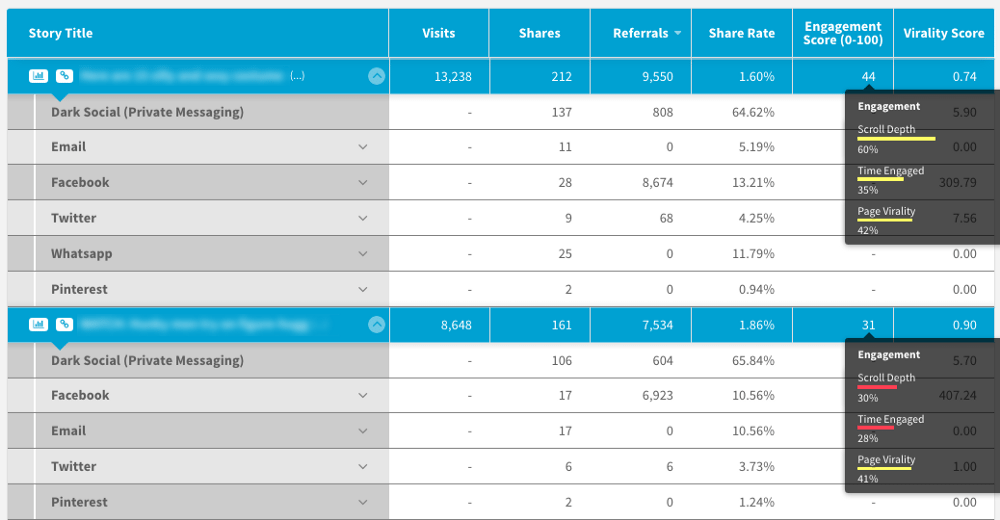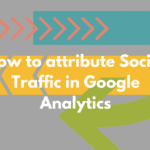Scarcity: Today, that should be the first thing that comes to mind when you think about Social Marketing.
Facebook et al. are making it harder for everyone to organically reach their audiences. The news feed is a hard place to live in and we’ve seen customers with 500.000 monthly visits with little to no social engagement.
Of course, this shouldn’t come as unexpected. Those leading the social media space (Schaefer, Pulizzi, Rose et al.) predicted this a long time ago. They’ve educated their audiences towards the content shock (or crush). And they nailed the prognostic that social would become not only a free-to-play but also a pay-to-win game for publishers and brands.
A lot has been discussed on the future of content. In the span of a fortnight, two articles with very distinct conclusions landed on my lap:
Now, I found both articles extremely well written and interesting.
Lantz builds a case around how content should be about quality, not quantity. Rayson, in contrast, delves into Bezos’s strategy to drive up the Washington Post’s audience. How? By producing a hell lot of more content.
Both authors deemed that such arguments were based on better audience engagement. However, and opinion aside (for now), I couldn’t help to notice a common flaw in their thinking: how they both defined engagement.
Curiously enough, Lantz argument was based on Buzzsumo’s research: the author goes by saying that “(…) It’s also getting harder for people who produce good content to get attention. Engagement (measured by share count) is dropping”.

On Rayson’s approach, he compares Social Media Examiner and Hubspot’s results. His instinct led him to choose the former, due to higher average shares per post.
I’ve mentioned this before: “Tracking social by looking at the number of shares is about as useful as rearranging the deck chairs on the Titanic”.
The same goes for engagement if you’re measuring it that way. I understand both authors’ claims but I don’t see engagement dropping.
Engagement is changing. One huge reason is because 80% of shares occur outside the share buttons they’re looking at. The other one is the definition of engagement itself.
Preparing for engagement
This isn’t news for anyone. The Pageview age is long gone and publishers are looking for better ways to measure engagement.
Over the last year, we’ve been working in providing virality data to our partners and customers. I believe that virality is a good way to predict organic growth. Virality scores can lead to better promotion decisions, that in turn generate viral growth.
Still, this alone doesn’t tell much about how your audience engages with your content.
Where we Stand
We’re tracking almost 100% of our users’ social activity: share buttons, dark social and copy paste.
This means we have a pool of data we transfer onto engagement analysis like never before.
That’s why we feel we are in a good position to correctly measure engagement.
Our Engagement Score
GetSocial exists to help marketers and publishers make better content decisions.
This includes what to post next, where to promote content, etc.
With that in mind, we developed a new framework for engagement.
This score answers three questions:
- How much time is the audience spending on this content?
- How long are they scrolling this content?
- Is this content generating traffic for other articles (horizontal traffic)?
We developed the technology that would allow us to quantify all these metrics.
Both our “Time Engaged” and “Scroll Depth” algorithms don’t consider one-pageview visits as bounces. This alone will help to remove a lot of noise from the website’s traffic. Our “Page Virality” identifies hot pages generating horizontal traffic.
We combined these three metrics into a simple KPI, Engagement Score, that you can use to make better decisions. For similar virality scores, you can now understand what drives engagement in different stories.

The Future of Content
Regardless of what the future may hold, the one thing I’m sure is that you’ll need to be extremely data-driven to manage content and social networks.
You should be looking for anything that gives you an edge over your competitors by discovering what helps you engage and develop your audience in a predictable and effective way.
The publishing industry needs all the help it can get to find a sustainable business model and, until that objective is met, our work isn’t over.
Interested in knowing more about Dark Social & Analytics?
[su_button url="https://getsocial.io" target="_blank" style="flat" background="#21D2B5" color="#ffffff" size="7" wide="no" center="yes" radius="auto" icon="" icon_color="#FFFFFF" text_shadow="none" desc="" onclick="" rel="" title="" id="" class=""]SIGN UP FOR FREE[/su_button]





